The title of this piece, by the way, was something my genius husband suggested, and it seemed fitting in this time of the COVID-19 pandemic. While I'm not a Neiman's shopper, this couple looked like they might be having their "last hurrah" in a department store before socially isolating at home. They seem a little dazed and rattled!
In the Beginning: Marbled Paper
For me, it all begins with the piece of marbled paper. I hand-marble dozens of papers in all-day sessions in my laundry room about 10 times per year, which yields a LOT of marbled papers for me to choose from! It's a messy, laborious process that involves dipping treated paper into a big tray of carrageenan (a liquid, slimy substance that allows the acrylic paint to float, rather than sink to the bottom). I typically marble on top of an old watercolor painting (sometimes the white back of the paper, and sometimes the painted front of the paper); I like the paper to be at least 140# so that it's sturdy enough to stand up to further applications of acrylic paint and become a finished painting suitable for framing.
Process for Developing the Painting
The circular ovals in this particular marbled paper looked like small heads, and since I paint a lot of small headed figures, my eye is trained to start THERE and build the figure around the head. I treat the paper with matte medium before I begin developing the subject matter; after the matte medium is dry, I draw on the paper with water soluble crayon to sketch in my subject matter. From there, I mix up acrylic paint colors (using some opaque white gesso) to block out the parts of the marbling that I want to cover up. I pause between steps to assess what the painting needs, how the figures relate to the edges of the paper (I often put a white paper mat around the piece as I work on it so I can see where my "edges" are), and add touches of paint where needed. Because acrylic is so adaptable, I'm able to wipe off color as soon as I apply it, if I change my mind for some reason.
Without further ado, here are the images for "Last Hurrah At Neiman's"; if you click on each image, you'll see a caption that describes each step of the process.

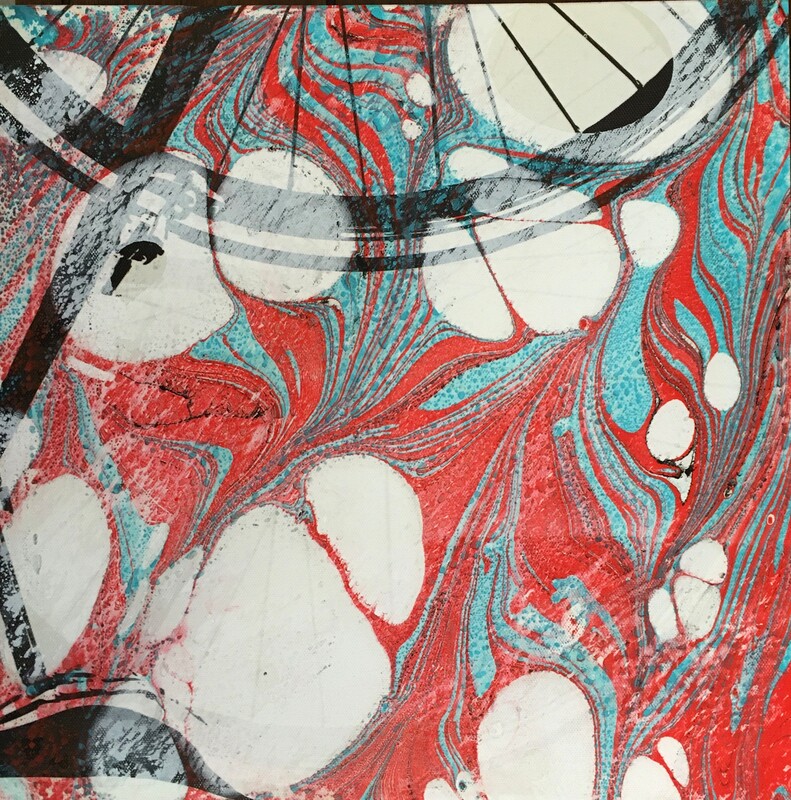

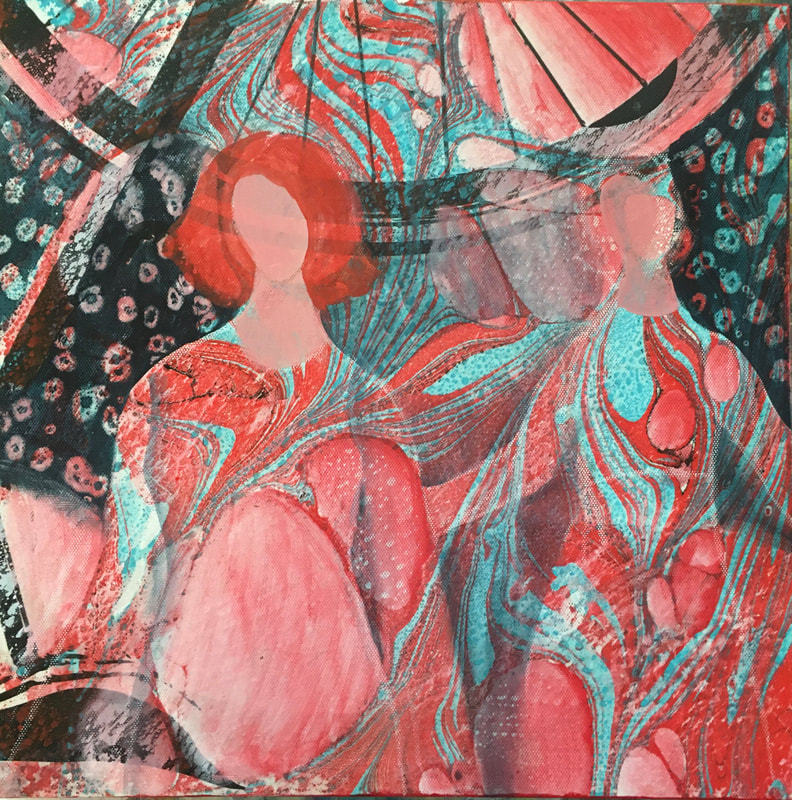
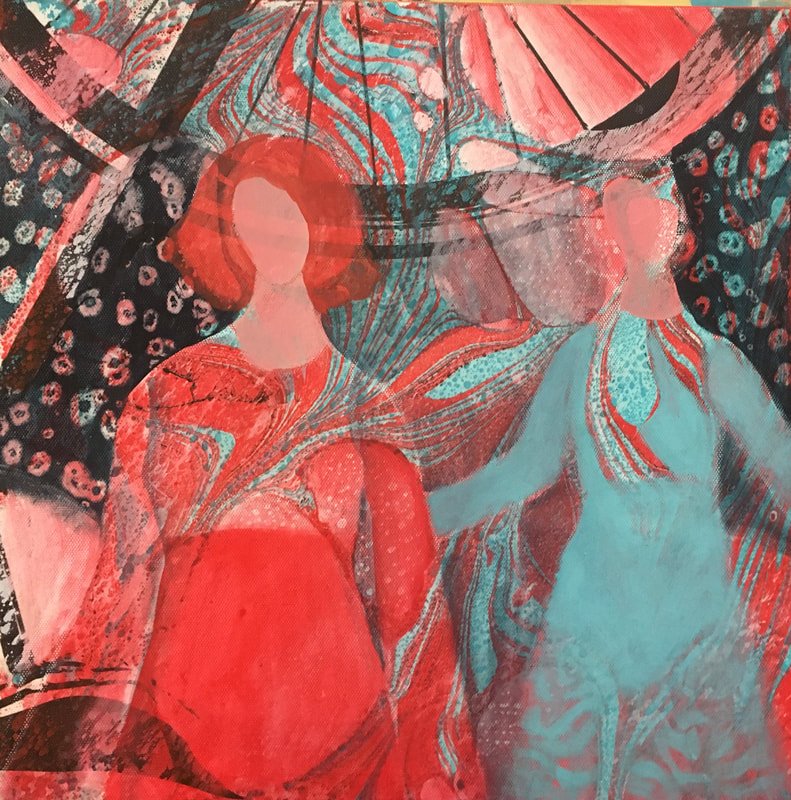
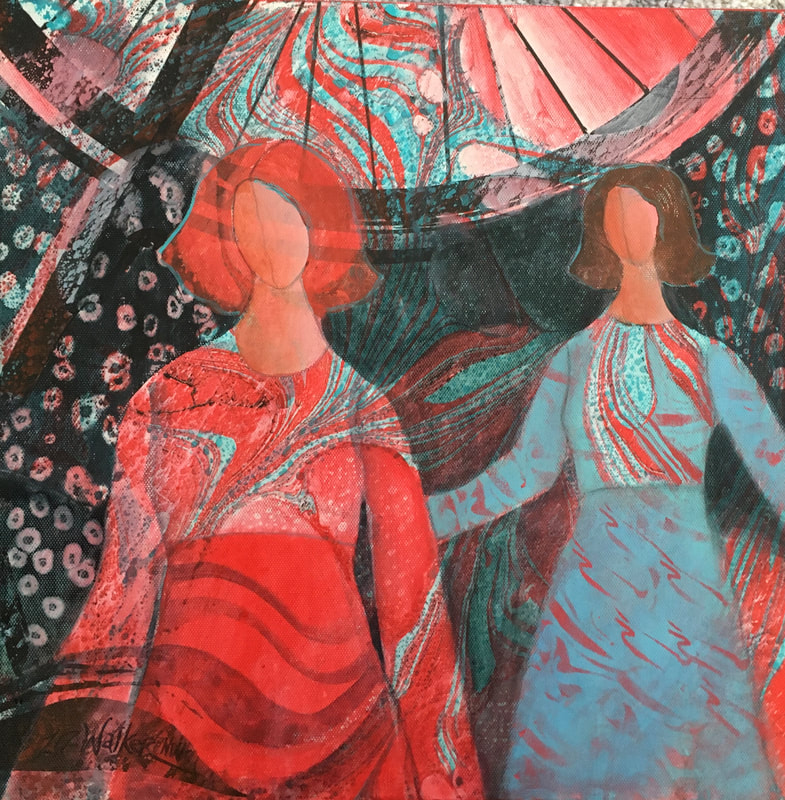
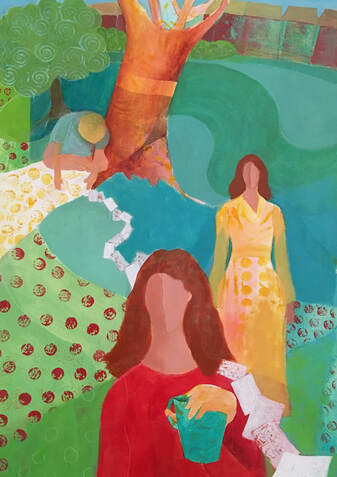

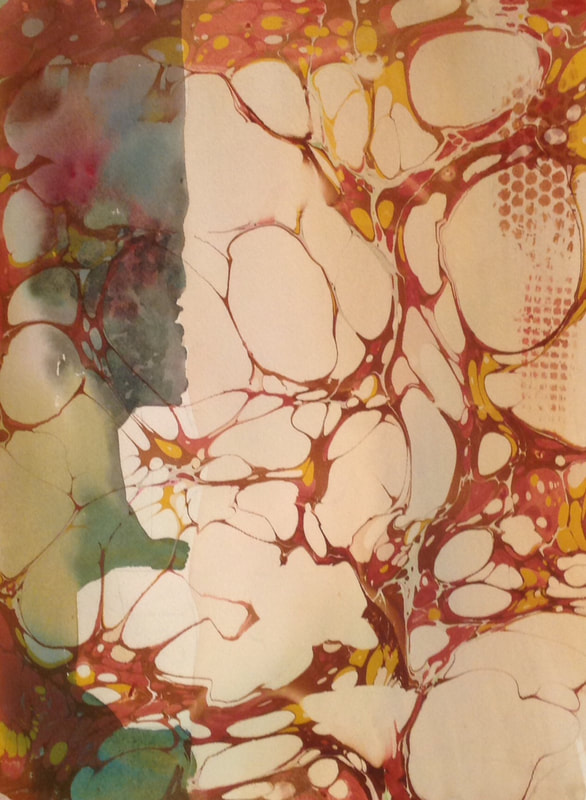
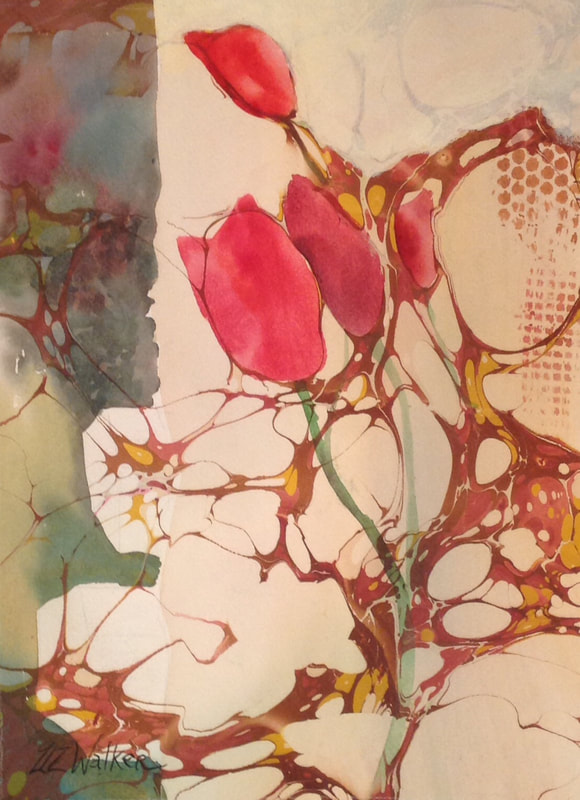
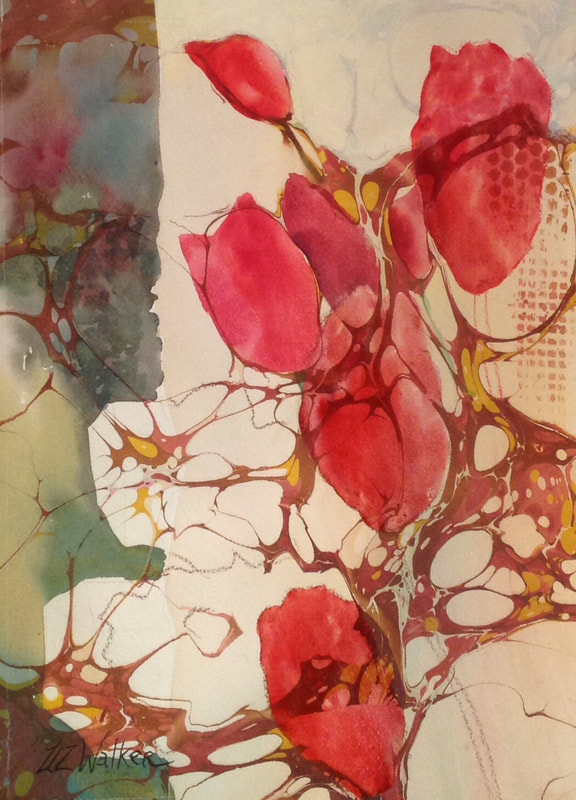
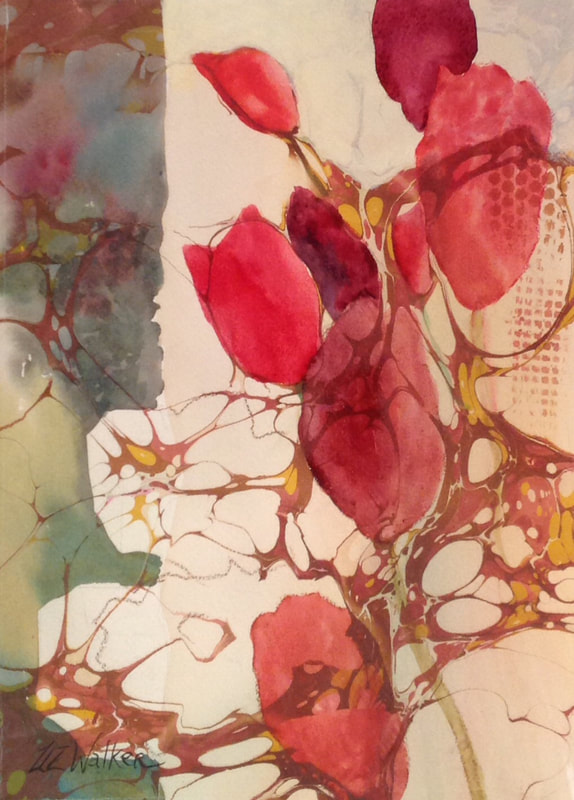
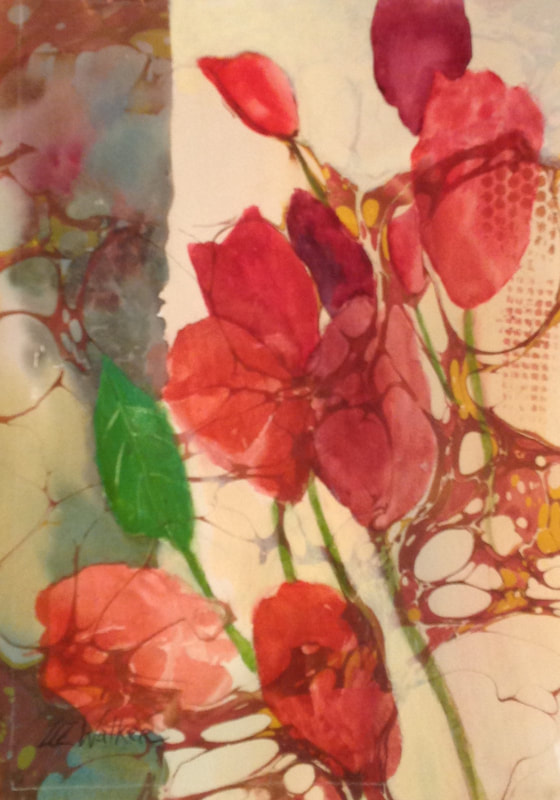
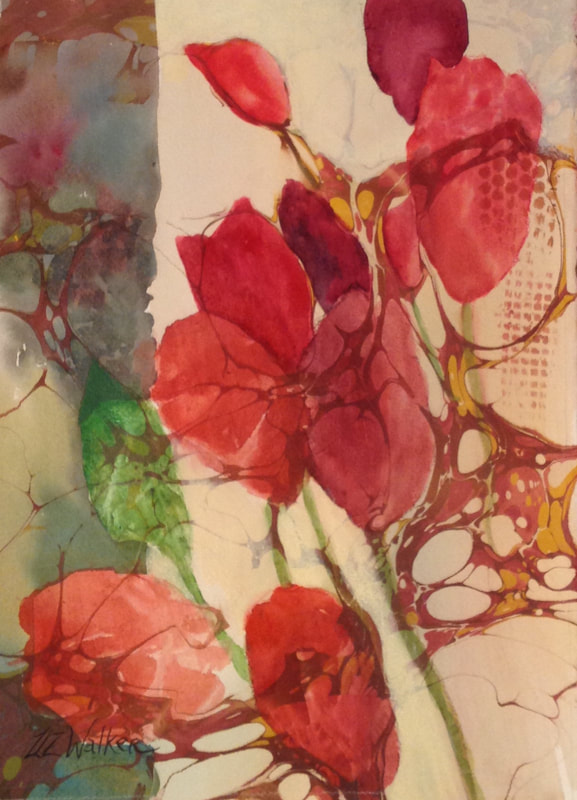
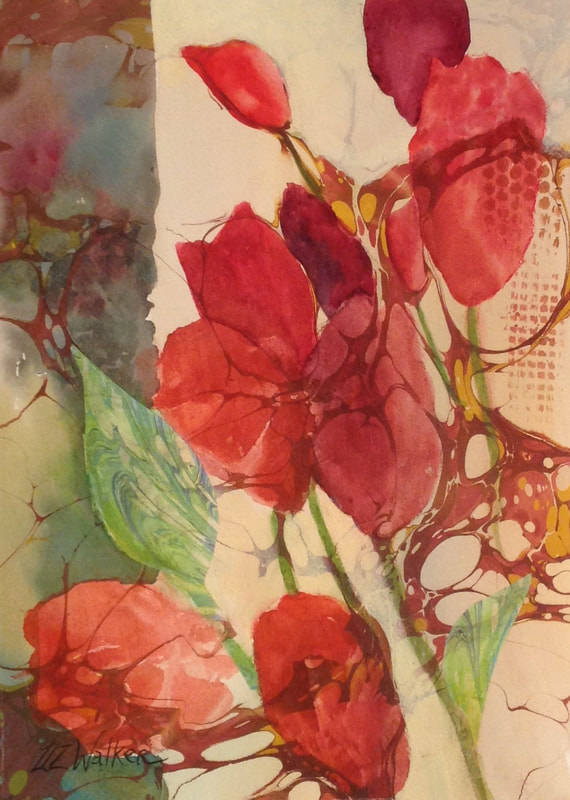
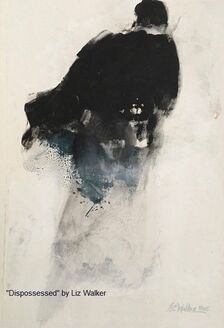
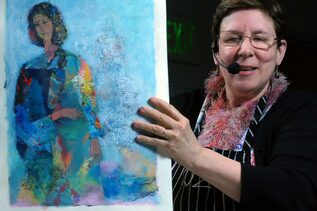
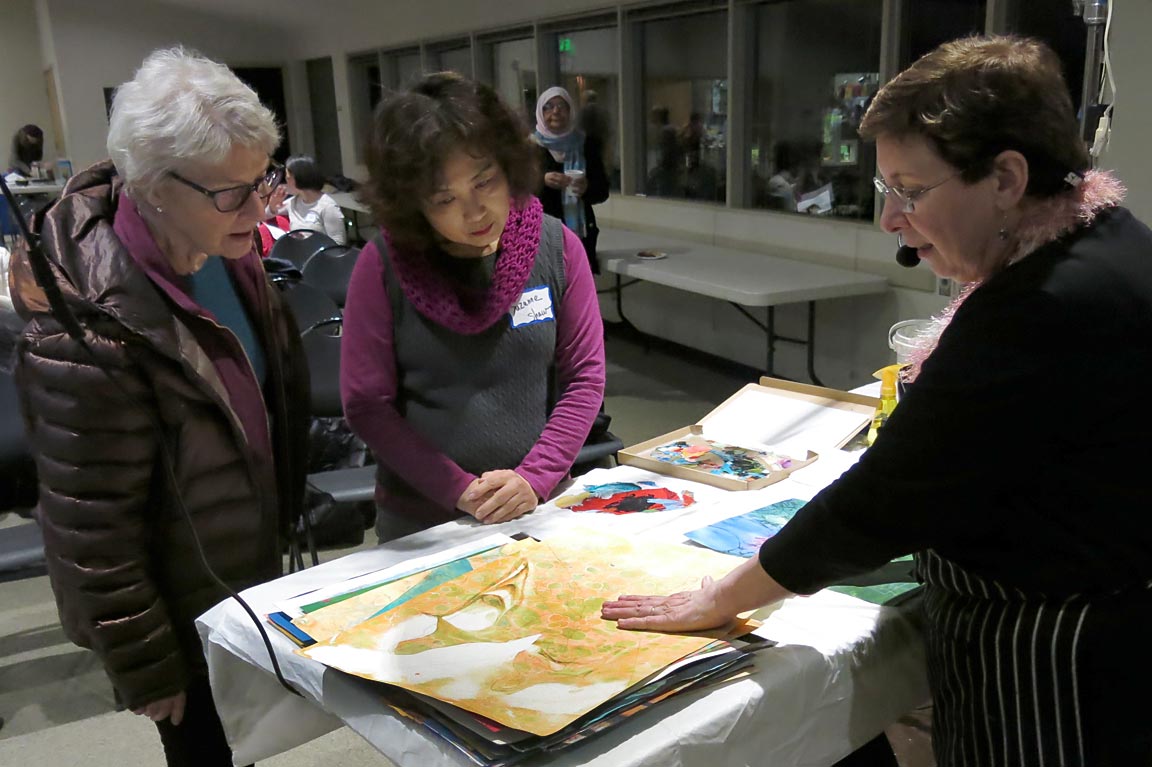
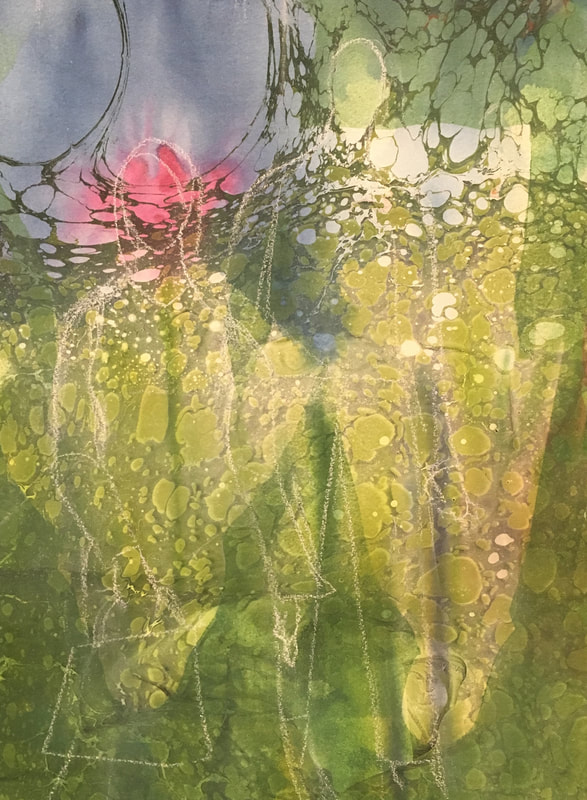
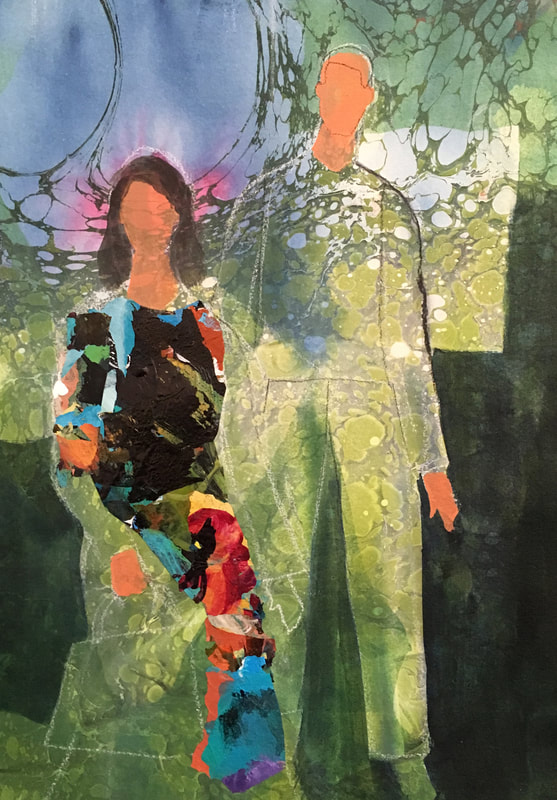
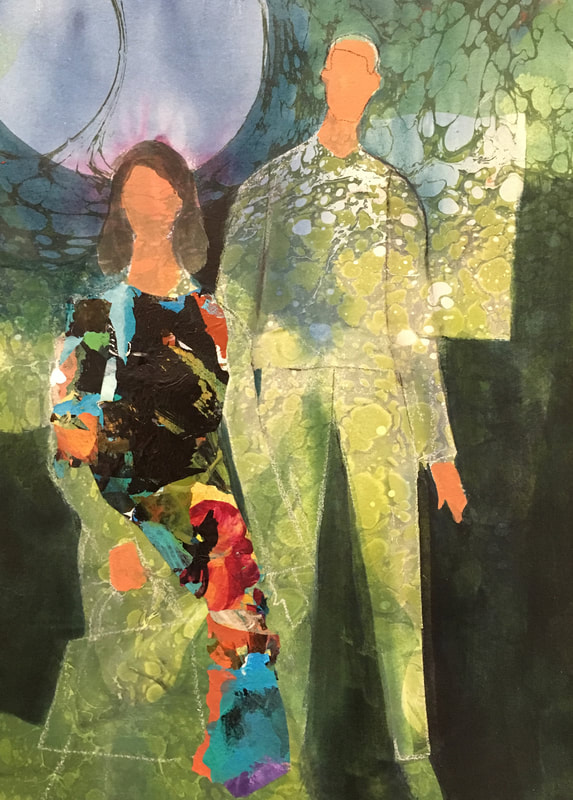

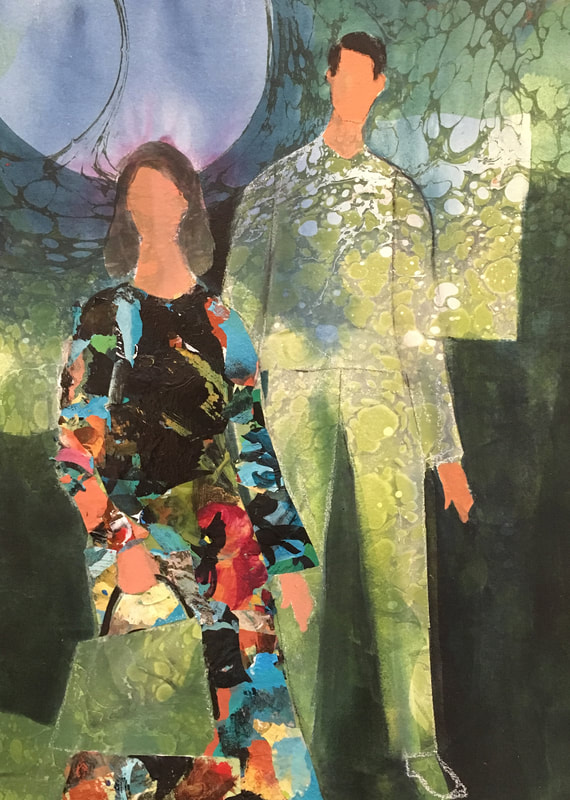
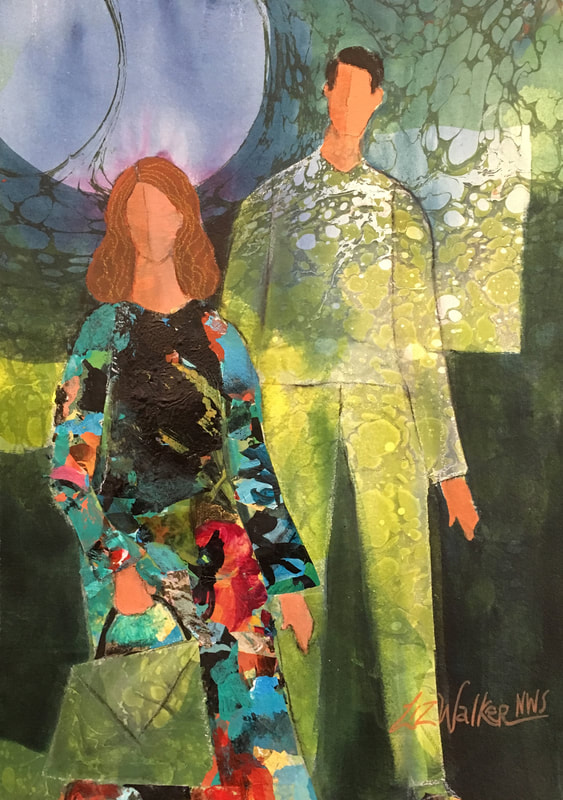
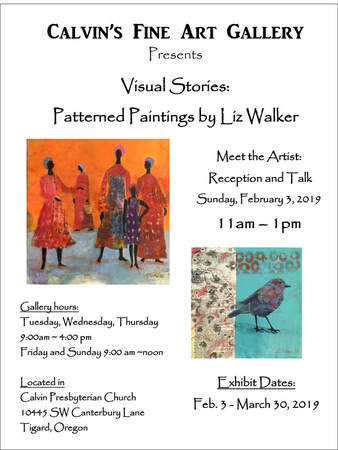
 RSS Feed
RSS Feed